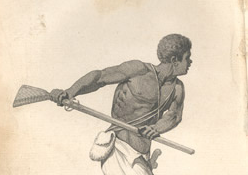Browse "Atlantic Canada"
-
Article
Laurence Coughlan
Laurence Coughlan, missionary (b at Drummersnave, Ire; d in London, Eng 1784?). Ordained a Church of England priest in 1765, Coughlan sailed to Newfoundland that same year under the auspices of the Society for the Propagation of the Gospel.
"https://development.thecanadianencyclopedia.ca/images/tce_placeholder.jpg?v=e9dca980c9bdb3aa11e832e7ea94f5d9" // resources/views/front/categories/view.blade.php
https://development.thecanadianencyclopedia.ca/images/tce_placeholder.jpg?v=e9dca980c9bdb3aa11e832e7ea94f5d9
-
"https://development.thecanadianencyclopedia.ca/images/tce_placeholder.jpg?v=e9dca980c9bdb3aa11e832e7ea94f5d9" // resources/views/front/categories/view.blade.php
https://development.thecanadianencyclopedia.ca/images/tce_placeholder.jpg?v=e9dca980c9bdb3aa11e832e7ea94f5d9
-
Article
Lydia Campbell
Lydia Campbell (née Brooks, formerly Lydia Blake, known commonly as “Aunt Lydia”), matriarch, writer (born 1 November 1818 at Hamilton Inlet, Newfoundland Colony; died 29 April 1905 in Mulligan, Newfoundland Colony). Campbell was an Anglo-Inuit matriarch in Labrador. She was the first person from Nunatsiavut to publish her writing. Her “Sketches of Labrador Life,” first published in 1894-95, is a rare autobiography detailing life in 19th-century Labrador. Campbell’s writing recounted the role of women in the period of early European colonization of the area.
"https://development.thecanadianencyclopedia.ca/images/tce_placeholder.jpg?v=e9dca980c9bdb3aa11e832e7ea94f5d9" // resources/views/front/categories/view.blade.php
https://development.thecanadianencyclopedia.ca/images/tce_placeholder.jpg?v=e9dca980c9bdb3aa11e832e7ea94f5d9
-
Macleans
MacLellan New NS Premier
For nearly two decades, Liberal MP Russell MacLellan toiled away in relative obscurity in Ottawa, perpetually overshadowed by two fellow Cape Bretoners, Allan J. MacEachen and David Dingwall.This article was originally published in Maclean's Magazine on July 21, 1997
"https://development.thecanadianencyclopedia.ca/images/tce_placeholder.jpg?v=e9dca980c9bdb3aa11e832e7ea94f5d9" // resources/views/front/categories/view.blade.php
https://development.thecanadianencyclopedia.ca/images/tce_placeholder.jpg?v=e9dca980c9bdb3aa11e832e7ea94f5d9
-
Article
Marc Lescarbot
Besides being a vivid account of early colonizing attempts in Acadia, the Histoire is a remarkable plea for realism in harvesting the colony's natural resources, as against a futile search for quick profits.
"https://d2ttikhf7xbzbs.cloudfront.net/media/media/12395746-ea64-4070-9f42-925ffcfca22c.jpg" // resources/views/front/categories/view.blade.php
https://d2ttikhf7xbzbs.cloudfront.net/media/media/12395746-ea64-4070-9f42-925ffcfca22c.jpg
-
Article
Jamaican Maroons in Nova Scotia
The ancestors of the Maroons of Jamaica were enslaved Africans who had been brought there by the Spanish in the 16th and 17th centuries, and later by the British (who captured Jamaica from Spain in 1655), to work its lucrative sugar plantations. The word maroon was widely used to describe a runaway, and maroonage to denote the act and action of escaping enslavement, whether temporarily or permanently. After a series of wars with the colonial government in Jamaica, one group of Maroons was deported to Nova Scotia in 1796. While Maroon communities existed in Nova Scotia for only four years before they were sent to Sierra Leone, their legacy in Canada endures.
"https://d2ttikhf7xbzbs.cloudfront.net/media/media/ec55dd45-84f0-4ca8-a613-cadef5f53496.jpg" // resources/views/front/categories/view.blade.php
https://d2ttikhf7xbzbs.cloudfront.net/media/media/ec55dd45-84f0-4ca8-a613-cadef5f53496.jpg
-
Article
Montagu Wilmot
Montagu Wilmot, British army officer, governor of Nova Scotia (d at Halifax 23 May 1766). An officer from 1730, Wilmot served almost exclusively in Nova Scotia 1746-66 and was at the siege of LOUISBOURG in 1758 as a regimental commander.
"https://development.thecanadianencyclopedia.ca/images/tce_placeholder.jpg?v=e9dca980c9bdb3aa11e832e7ea94f5d9" // resources/views/front/categories/view.blade.php
https://development.thecanadianencyclopedia.ca/images/tce_placeholder.jpg?v=e9dca980c9bdb3aa11e832e7ea94f5d9
-
Article
Nicolas Denys
Nicolas Denys, trader, colonial promoter (b at Tours, France 1598; d 1688). A young La Rochelle merchant, Denys sailed for Acadia in 1632 with Isaac de RAZILLY, and spent the next 40 years trying to develop the colony.
"https://development.thecanadianencyclopedia.ca/images/tce_placeholder.jpg?v=e9dca980c9bdb3aa11e832e7ea94f5d9" // resources/views/front/categories/view.blade.php
https://development.thecanadianencyclopedia.ca/images/tce_placeholder.jpg?v=e9dca980c9bdb3aa11e832e7ea94f5d9
-
Article
Paul Mascarene
Paul Mascarene, born Jean-Paul, military officer, colonial administrator (b in Languedoc, France 1684/85; d at Boston, Mass 22 Jan 1760). A Huguenot émigré, Mascarene served throughout New England and Atlantic Canada 1710-40 as a military engineer and fluent negotiator with the Acadians and Indians.
"https://development.thecanadianencyclopedia.ca/images/tce_placeholder.jpg?v=e9dca980c9bdb3aa11e832e7ea94f5d9" // resources/views/front/categories/view.blade.php
https://development.thecanadianencyclopedia.ca/images/tce_placeholder.jpg?v=e9dca980c9bdb3aa11e832e7ea94f5d9
-
Excerpt
People on the Margins of the Halifax Explosion
In the early 20th Century, most North End residents of Halifax perceived themselves as being collectively disadvantaged, compared to wealthier South End residents. However, within the North End certain groups — notably racial minorities, the elderly, non-British immigrants, members of the military, and unmarried women with children — stood out as being particularly vulnerable. They were among the hardest-hit in the aftermath of the Halifax Explosion of 1917.
"https://d2ttikhf7xbzbs.cloudfront.net/media/media/aa48ac21-9af9-44b9-b9de-8e6234022abd.jpg" // resources/views/front/categories/view.blade.php
https://d2ttikhf7xbzbs.cloudfront.net/media/media/aa48ac21-9af9-44b9-b9de-8e6234022abd.jpg
-
Article
Peter Easton
Peter Easton, privateer, pirate (born c. 1570 in England; died c. 1620). Easton visited Newfoundland in 1602, a year before becoming a pirate. He returned to Newfoundland in 1612 and built a fort at Harbour Grace. Easton plundered Basque, Spanish, English, French and Portuguese ships on the Newfoundland coast, in Puerto Rico and at the Azores islands. When pardoned by the English King James I, Easton purchased a castle in Savoy where he lived a life of leisure.
"https://d2ttikhf7xbzbs.cloudfront.net/PeterEaston/CROPTrinityPeterEaston_dreamstime_resize_120577719.jpg" // resources/views/front/categories/view.blade.php
https://d2ttikhf7xbzbs.cloudfront.net/PeterEaston/CROPTrinityPeterEaston_dreamstime_resize_120577719.jpg
-
Article
Pierre Biard
Pierre Biard, Jesuit missionary (b at Grenoble, France 1567 or 1568; d at Avignon, France 17 Nov 1622). After long preparation for missionary work, Biard left for ACADIA in early 1611.
"https://development.thecanadianencyclopedia.ca/images/tce_placeholder.jpg?v=e9dca980c9bdb3aa11e832e7ea94f5d9" // resources/views/front/categories/view.blade.php
https://development.thecanadianencyclopedia.ca/images/tce_placeholder.jpg?v=e9dca980c9bdb3aa11e832e7ea94f5d9
-
Article
Pierre-Joseph-Antoine Roubaud
Pierre-Joseph-Antoine Roubaud, Jesuit priest and missionary, spy, forger (b at Avignon, France 28 May 1724; d at Paris, France in or after 1789).
"https://development.thecanadianencyclopedia.ca/images/tce_placeholder.jpg?v=e9dca980c9bdb3aa11e832e7ea94f5d9" // resources/views/front/categories/view.blade.php
https://development.thecanadianencyclopedia.ca/images/tce_placeholder.jpg?v=e9dca980c9bdb3aa11e832e7ea94f5d9
-
Article
Pierre Maillard
Pierre Maillard, priest of the Séminaire des missions étrangères, missionary (b in the diocese of Chartres, France c 1710; d at Halifax 12 Aug 1762). Missionary to the MICMAC, Maillard was a brilliant linguist who perfected a system of written symbols for the Micmac language.
"https://development.thecanadianencyclopedia.ca/images/tce_placeholder.jpg?v=e9dca980c9bdb3aa11e832e7ea94f5d9" // resources/views/front/categories/view.blade.php
https://development.thecanadianencyclopedia.ca/images/tce_placeholder.jpg?v=e9dca980c9bdb3aa11e832e7ea94f5d9
-
Article
Planters
The terms of settlement promised religious freedom, except to Roman Catholics, but the Church of England initially had advantages and gave leadership for schooling youths. Most of the settlers were Congregationalists.
"https://d2ttikhf7xbzbs.cloudfront.net/media/media/b025b87d-c65d-40cc-af2a-c487a30e8c2c.jpg" // resources/views/front/categories/view.blade.php
https://d2ttikhf7xbzbs.cloudfront.net/media/media/b025b87d-c65d-40cc-af2a-c487a30e8c2c.jpg
